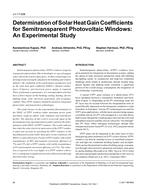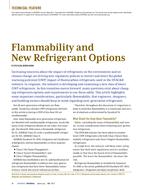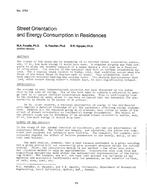Click here to purchase
Recently, understanding thermal comfort management enabled the scientific community to broaden its research towards smart device set-ups, in order to further reduce energy consumption and thermal comfort satisfaction. Thus, the need to minimize user interaction and implement prediction functions has arisen. In this work, the development of a smart thermostat is presented. The procedure is divided into three basic stages: calibration, development of energy saving and thermal comfort routines, and comparison with a conventional thermostat’s operation. Calibration refers to the thermostat’s ability to recognize the thermal characteristics of the thermal zone it is installed. For the needs of the calibration, as well as for the operation of the thermostat a simulation model is required; the degree-hour model, properly adjusted in order to cope with the requirements of the specific application, has been proven as the most convenient in terms of simplicity, reliability and effectiveness. Given the validity of the calibration process, a smart thermostat routine was developed, taking occupancy periods into account and attempting to save energy while ensuring satisfaction of thermal comfort. Operation of the smart thermostat is compared to that of the conventional analog thermostat. The results verify the potential of the developed thermostat in terms of thermal comfort satisfaction and energy savings. Future work includes the integration of more parameters into the operation of the thermostat, i.e. humidity and Indoor Air Quality ones, including CO2 concentration for the controlling of fresh air adequacy through a complete air-conditioning system, as well as the testing of its operation under actual conditions.
Citation: IAQ 2020: Indoor Environmental Quality
Product Details
- Published:
- 2021
- Number of Pages:
- 8
- File Size:
- 1 file
- Product Code(s):
- D-IAQ2020-C15
- Note:
- This product is unavailable in Belarus, Russia


